Quadruple Alliance 1834 Worksheets
Do you want to save dozens of hours in time? Get your evenings and weekends back? Be able to teach about Quadruple Alliance 1834 to your students?
Our worksheet bundle includes a fact file and printable worksheets and student activities. Perfect for both the classroom and homeschooling!
Resource Examples
Click any of the example images below to view a larger version.
Fact File
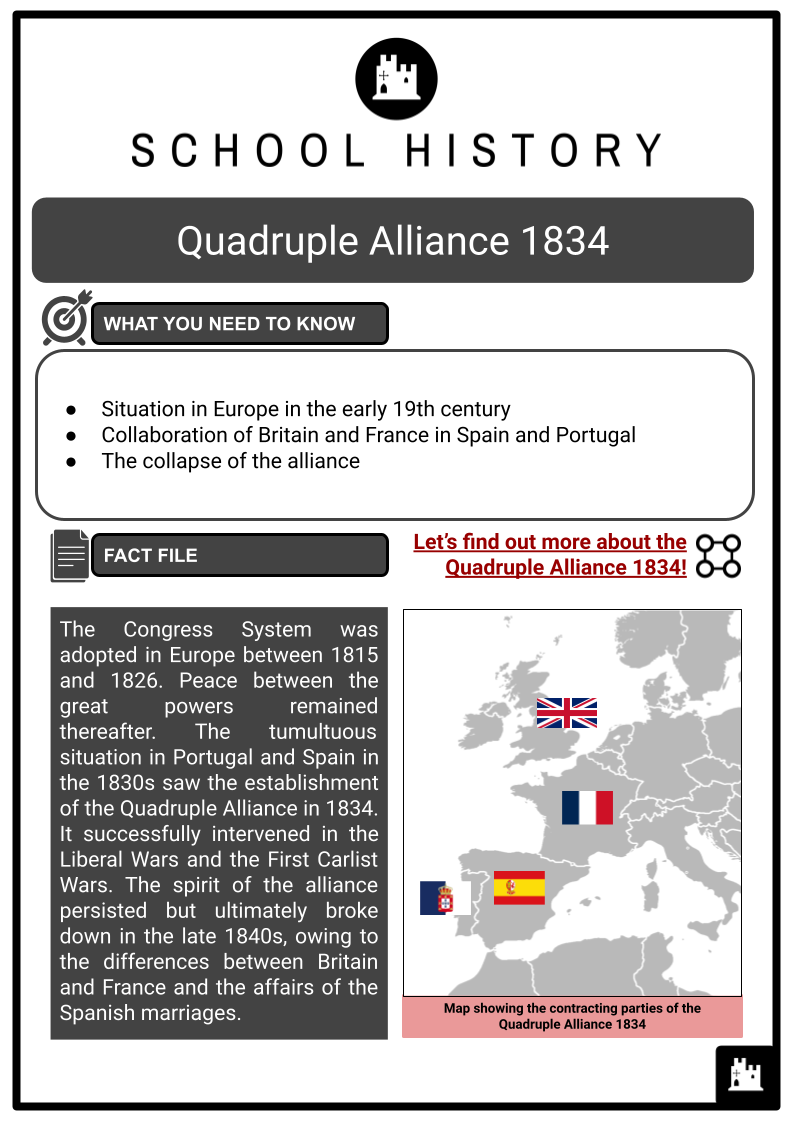
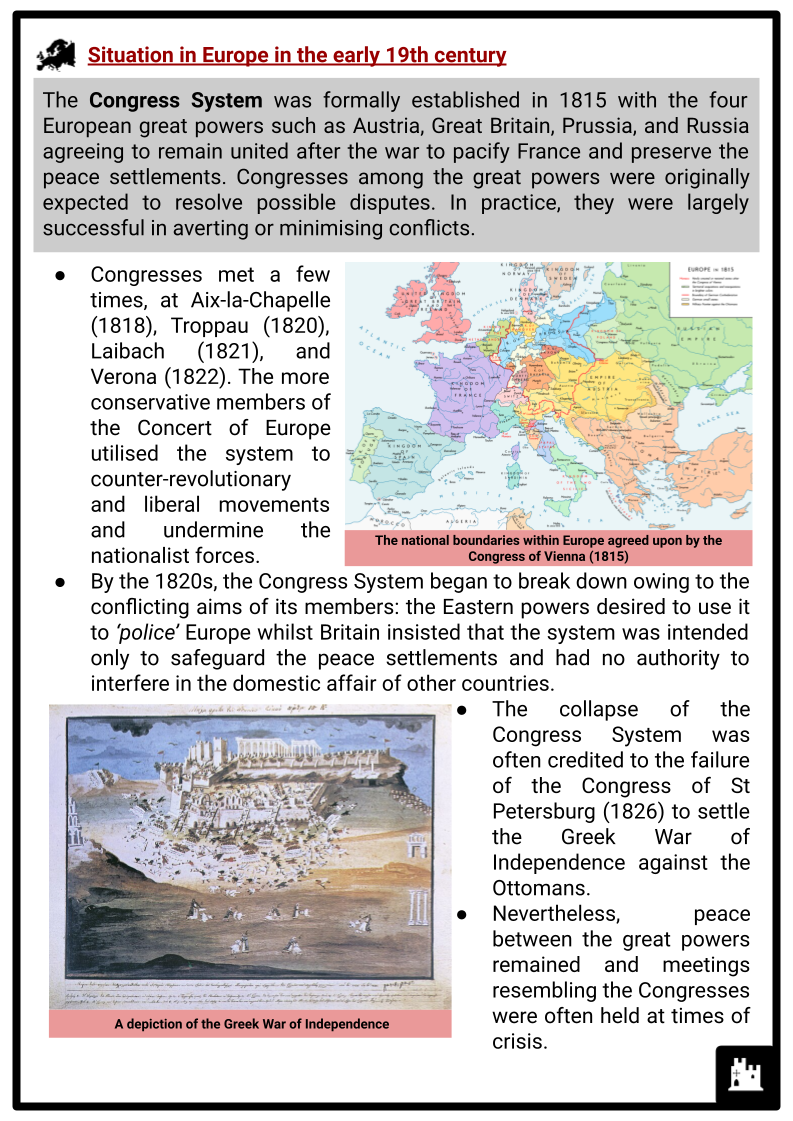
Student Activities
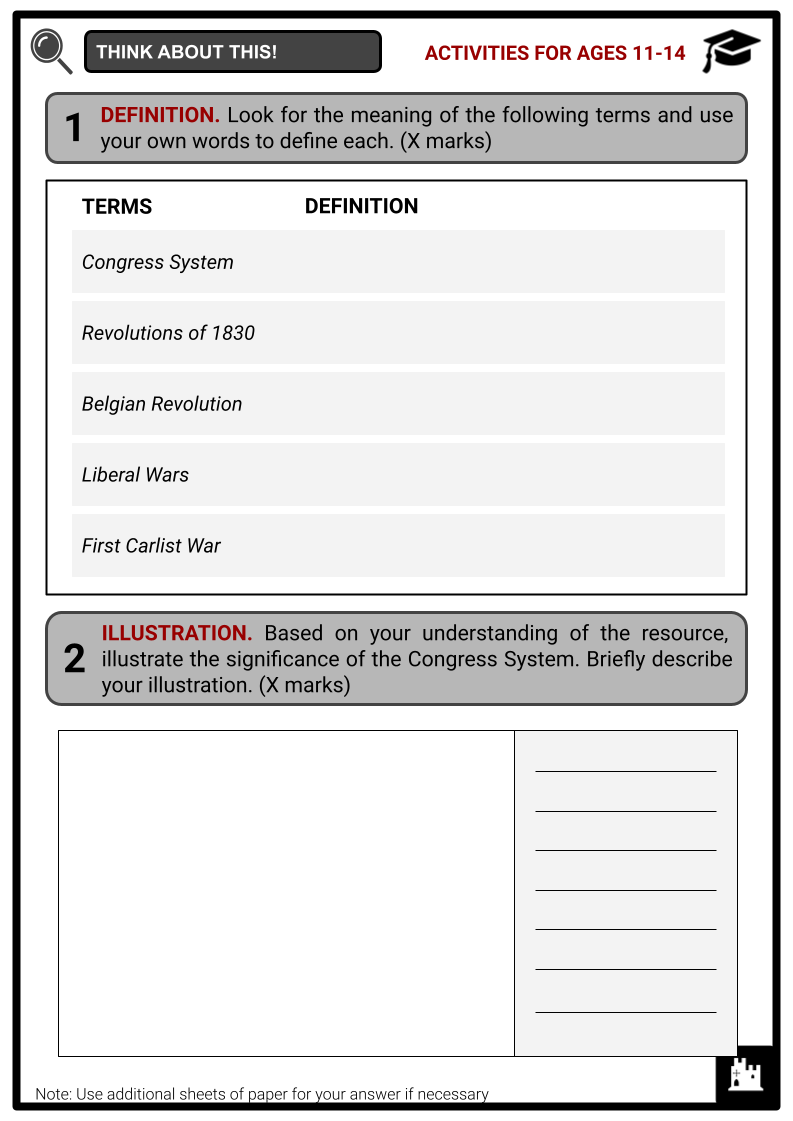
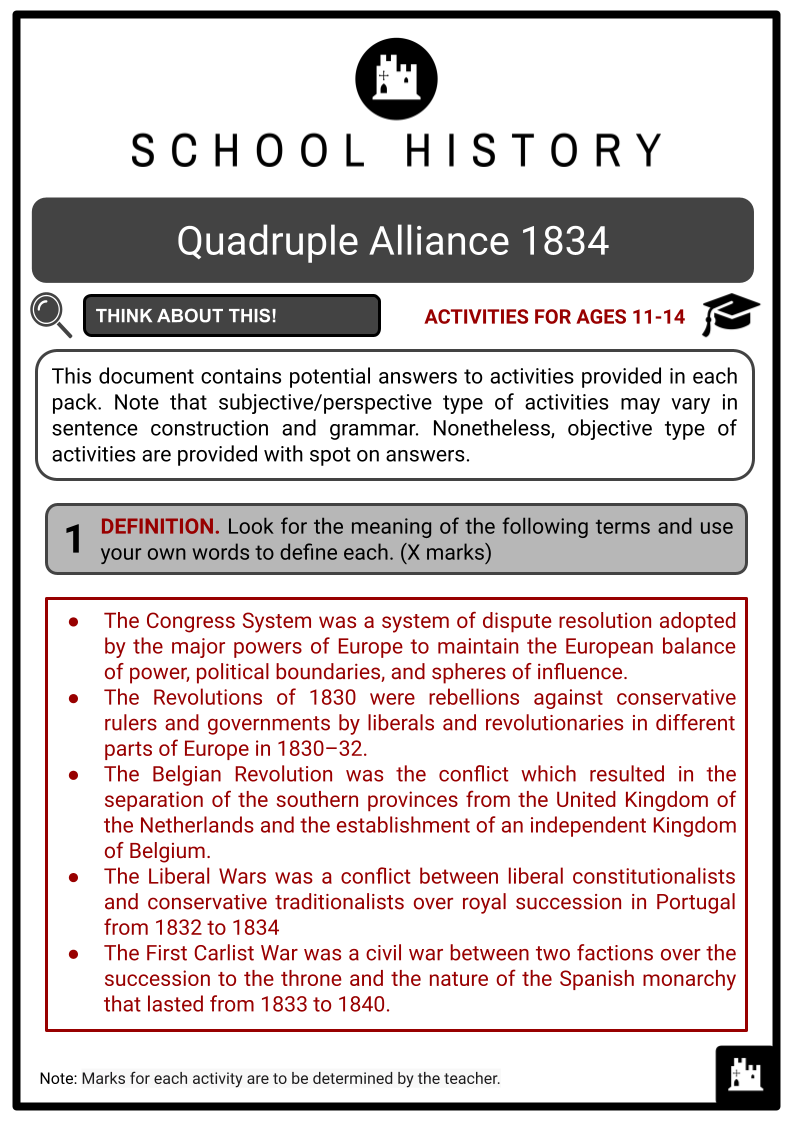
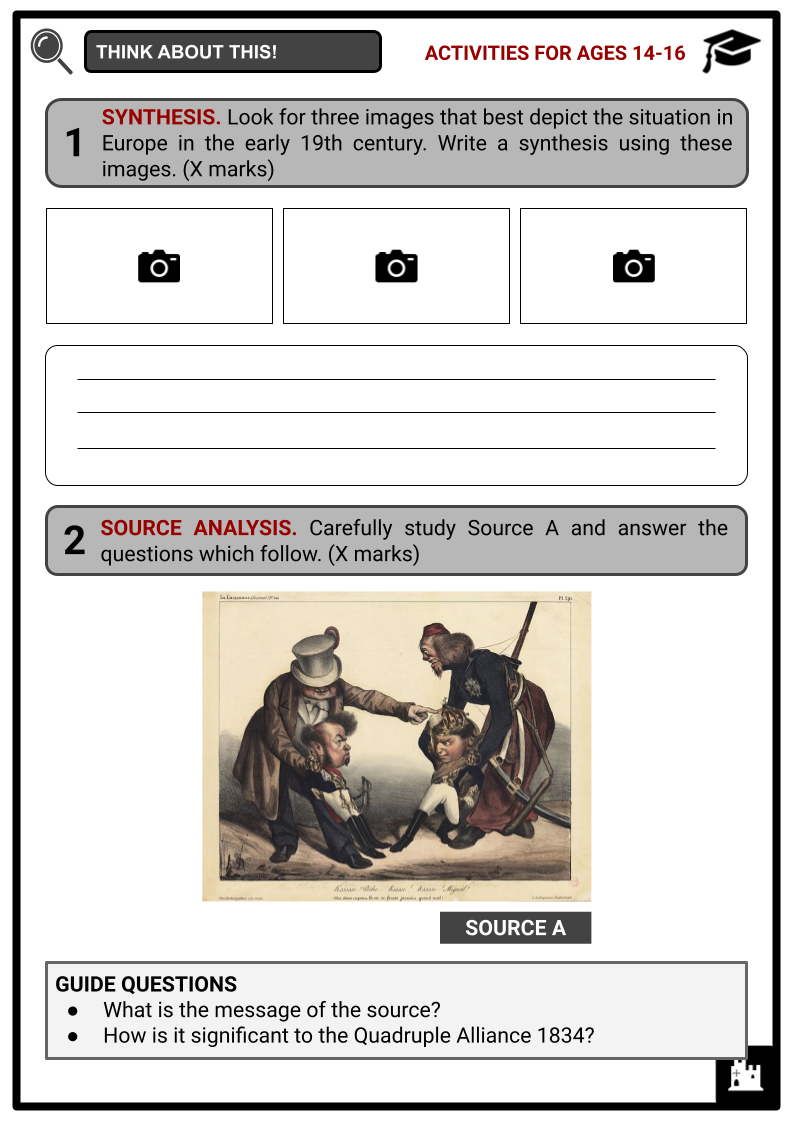
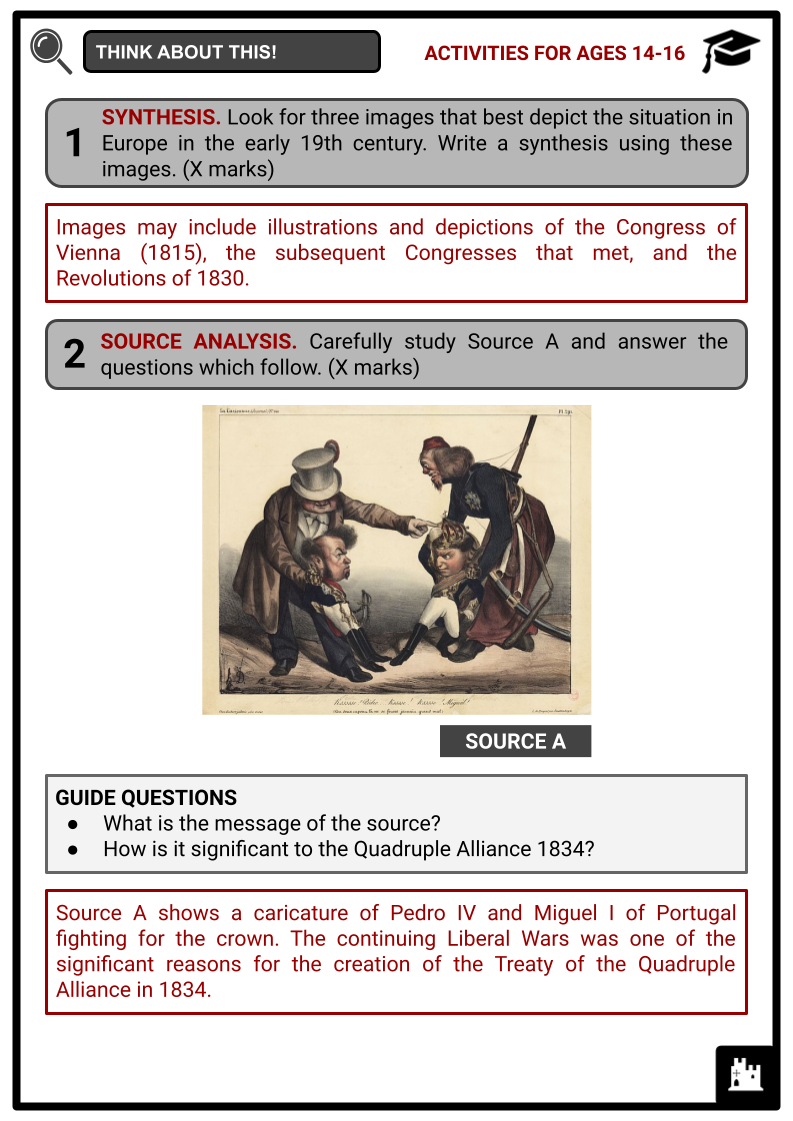
Summary
- Situation in Europe in the early 19th century
- Collaboration of Britain and France in Spain and Portugal
- The collapse of the alliance
Key Facts And Information
Let’s find out more about the Quadruple Alliance 1834!
The Congress System was adopted in Europe between 1815 and 1826. Peace between the great powers remained thereafter. The tumultuous situation in Portugal and Spain in the 1830s saw the establishment of the Quadruple Alliance in 1834. It successfully intervened in the Liberal Wars and the First Carlist Wars. The spirit of the alliance persisted but ultimately broke down in the late 1840s, owing to the differences between Britain and France and the affairs of the Spanish marriages.
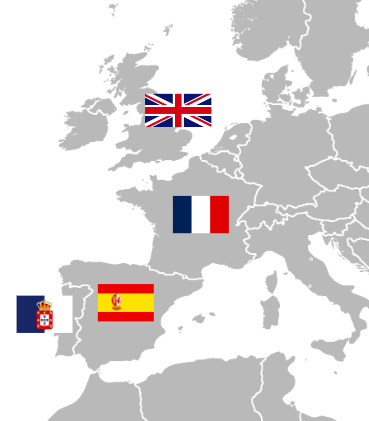
Situation in Europe in the early 19th century
- The Congress System was formally established in 1815 with the four European great powers such as Austria, Great Britain, Prussia, and Russia agreeing to remain united after the war to pacify France and preserve the peace settlements. Congresses among the great powers were originally expected to resolve possible disputes. In practice, they were largely successful in averting or minimising conflicts.
- Congresses met a few times, at Aix-la-Chapelle (1818), Troppau (1820), Laibach (1821), and Verona (1822). The more conservative members of the Concert of Europe utilised the system to counter-revolutionary and liberal movements and undermine the nationalist forces.
- By the 1820s, the Congress System began to break down owing to the conflicting aims of its members: the Eastern powers desired to use it to ‘police’ Europe whilst Britain insisted that the system was intended only to safeguard the peace settlements and had no authority to interfere in the domestic affair of other countries.
- The collapse of the Congress System was often credited to the failure of the Congress of St Petersburg (1826) to settle the Greek War of Independence against the Ottomans.
- Nevertheless, peace between the great powers remained and meetings resembling the Congresses were often held at times of crisis.
- A revolutionary wave in Europe known as the Revolutions of 1830 took place and included two romantic nationalist revolutions such as the Belgian Revolution and the July Revolution. This marked a turning point in the Congress System.
- In particular, the Belgian Revolution, in which Belgium separated from the Kingdom of the Netherlands, saw the division of the great powers into blocs; Britain and France on the one hand, Prussia, Austria and Russia on the other.
Collaboration of Britain and France in Spain and Portugal
- Both Portugal and Spain faced a challenging internal situation. In Portugal, the Liberal Wars over royal succession had been going on since the late-1820s. In Spain, the First Carlist War over royal succession and the nature of the Spanish monarchy began in 1833. Both the claims of the young queens, Maria II of Portugal and Isabella II of Spain, were challenged.
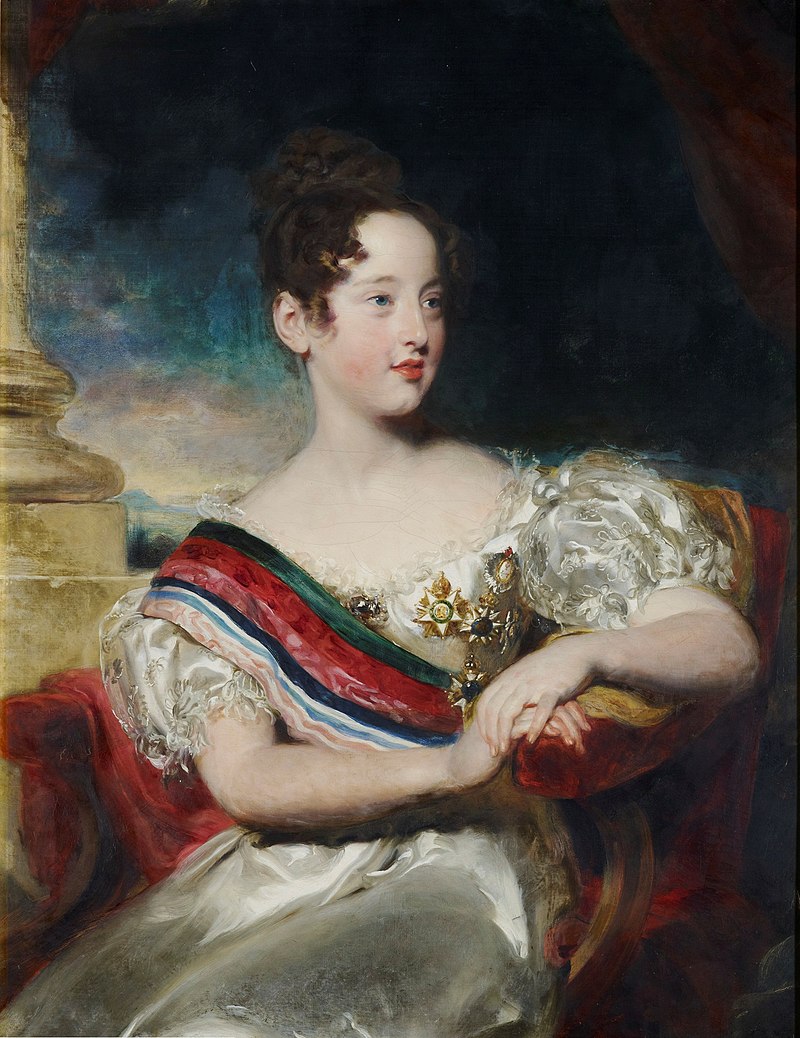
- In April 1834, Britain, France, and the more liberal claimants to the thrones of Spain and Portugal formed the Quadruple Alliance with the intention of strengthening the constitutional rulers of Spain and Portugal.
- It was Britain that initiated the treaty, as the British Foreign Secretary Palmerston believed that this served as a counter-balance to the absolutist powers of Eastern Europe.
- Portugal signed the treaty with little interest, while Spain, which saw it as a diplomatic success, signed enthusiastically. Britain initially viewed the accession of France with reluctance. France’s inclusion is believed to be motivated by its desire for a closer relationship with Britain.
What did the Quadruple Alliance entail?
-
- The alliance sought to achieve the expulsion of the Portuguese Infante Miguel and Spanish Infante Carlos from Portugal.
- In Spain, the alliance backed Maria Cristina, who was acting as regent for Isabella II. She joined forces with the liberals against the pretender Don Carlos in the First Carlist War.
- In Portugal, the alliance supported Maria da Glória by intervening in the Liberal Wars against Dom Miguel.
- The alliance was successful in resolving the Portuguese problem. The Liberal Wars concluded in 1834 after six years of civil war, with a peace declared under a settlement by which Dom Miguel formally relinquished all claims to the throne of Portugal, was accorded an annual pension, and was effectively exiled.
- Meanwhile, the solution to the Spanish question proved more complex. France failed to intervene in the First Carlist War, while Portuguese cooperation in the conflict was limited. British influence in the Spanish civil war, however, was more significant.
- In fact, Britain, in addition to military assistance, played a key diplomatic role in the signing of the treaties which reduced the cruelty of the war and secured peace.
- Following the conclusion of the wars in Portugal and Spain, the Quadruple Alliance formally ceased to have effect. Nevertheless, neither of the contracting parties sought its termination, hence the spirit of the Quadruple Alliance remained in the succeeding years.
The collapse of the alliance
- The influence of France and Britain in Spain was growing following the end of the conflict. There emerged a struggle for greater influence in Spain between the two powers, owing to economic rivalries and more importantly, the strategic control of the Iberian Peninsula which ensured vital routes. In Portugal, the traditional British dominance persisted, hence there was less of a struggle between Britain and France.
- Since the formation of the alliance, there existed conflicting economic interests between the French and the British, which made the union weak.
- However, it was the Spanish affairs in the 1840s that was the turning point of the spirit of the alliance. The issue of the royal marriages of Isabella II of Spain and her sister the Infanta Luisa Fernanda in 1846 marked the end of a closer relationship between France and Britain.
- Britain had long-held fears of a union between the French and Spanish crowns. It favoured the idea of a marriage between Isabella II and the cousin of the English prince consort.
- Meanwhile, British support for the progressives, who desired the restoration of the liberal constitution of 1812, was feared by the Spanish and French governments.
- Consequently, a double marriage was planned: Isabella II was pressured into accepting a union with a Spanish prince, while France managed to secure a French husband for the Infanta.
- Whilst the French were successful in preventing a British-backed suitor from becoming Spain’s king consort, both the marriages they secured proved to be unhappy ones.
- With the end of the cooperation between France and Britain in the affairs of the Iberian Peninsula, France would later be forced to seek allies instead among the conservative powers in Eastern Europe. The Quadruple Alliance had a substantial impact on Spanish politics and foreign policy.
Frequently Asked Questions
- What was the Quadruple Alliance of 1834?
The Quadruple Alliance of 1834 was a coalition formed by the European powers of Great Britain, France, Spain, and Portugal.
- Why was the Quadruple Alliance formed?
The alliance was formed to support Queen Maria II's legitimacy and to oppose Dom Miguel's absolutist regime, which sought to seize power in Portugal.
- Who were the key figures involved in the Quadruple Alliance?
The key figures involved were Queen Maria II of Portugal, her uncle Dom Miguel, and the leaders of the allied European powers, including William IV of Great Britain, Louis-Philippe of France, and Isabella II of Spain.
